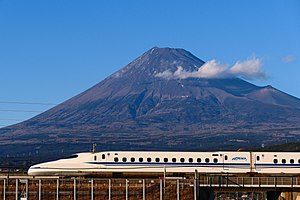The possibility of one or more Very Fast Train (VFT) lines for Australia has been debated for more than 40 years, most often being treated as a complete joke. However, perhaps that’s about to change.
Prime Minister Anthony Albanese has long been a supporter of VFT transport for Australia, and his government is now putting its money where its mouth is. As this article in The Conversation notes:
The Albanese government set up the High Speed Rail Authority in 2022. It also committed A$500 million to plan and protect a high-speed rail corridor between Sydney and Newcastle. This corridor was prioritised due to significant capacity constraints on the existing line, among other reasons.
The ultimate plan is for a high-speed rail network to connect Brisbane, Sydney, Canberra, Melbourne and regional communities across the east coast. The network would help Australia in its urgent task to reduce greenhouse gas emissions from transport. These continue to increase even as emissions from other sectors fall.

The main reason why people have derided the possibility of VFT is that they argue that Australia’s population density is too low. However, the reality is that the population of the Sydney/Canberra/Melbourne region is about 15.5 million. Sydney (including Newcastle, Wollongong and the Blue Mountains) has a population of about 6.1 million people while Melbourne (including Geelong, Ballarat and Bendigo) has a population of about 5.9 million.
By comparison, the region serviced by the Paris to Marseille VFT line is almost exactly the same, if not less. The Greater Paris region has a population of about 11.3 million, while the Marseille region (including Aix-en-Provence and Nice) has a population of 1.83 million.
The Sydney to Melbourne air route is the fifth busiest in the world.
If we look at travel times, Sydney to Melbourne by air takes about 90 minutes, but loading and unloading luggage and travel between the airport and the respective CBDs takes around 40 minutes in each case, making a total of 170 minutes. By comparison, VFT would travel from CBD to CBD direct (between Southern Cross Station in Melbourne and Central Station in Sydney). Projections indicate that this would take approximately 165 minutes i.e. almost exactly the same as covering the journey by air.
As mentioned above, VFT plans also propose in the long-term to link Sydney and Brisbane (with the Sydney-Newcastle leg being the first one off the mark – even before any part of the Sydney-Melbourne line). The Greater Brisbane region (including the Gold Coast and Sunshine Coast) has a population of approximately 3.65 million people. Like Sydney to Melbourne, VFT travel from Sydney to Brisbane would take about three hours (180 minutes).
By comparison, a flight from Sydney to Brisbane also takes about 90 minutes, and again we are talking about 30-40 minutes for travel between the respective airports and CBDs. Thus, as for Sydney to Melbourne, the total journey time for air travel is almost exactly the same as by Very Fast Train.
In addition to the fact that the journey times are almost exactly the same, the major reason for looking very seriously at VFT travel is a substantial saving on greenhouse gas emissions. As the link in the above extract from an article in The Conversation indicates, facilitating the construction of VFT lines is a key part of the Albanese government’s strategy for cutting Australia’s greenhouse gas emissions. There is currently no viable method of moving to electrically powered jet aeroplanes, whereas most if not all VFT lines in the world are already electrically powered.
In my view a strong case can be made for modest subsidies for both construction and operation of VFT lines joining Australia’s major East Coast centres.
Can Australia afford to construct VFT rail lines? A better question is whether we can afford NOT to do so. France, Germany, Italy, Spain, China and Japan all have VFT. On some measures Australians are the wealthiest people in the world. However, population numbers tell a very different story. Australia currently has a population of 27 million, whereas Germany has 84 million, France 66 million, Italy 59 million and Spain 48 million. On the other hand, Australia’s population is growing at 2.5% annually whereas Germany is growing at 0.8%, France 0.3%, Italy -0.3% and Spain 1.2%. That comparison indicates that we should hasten slowly on developing a VFT network.